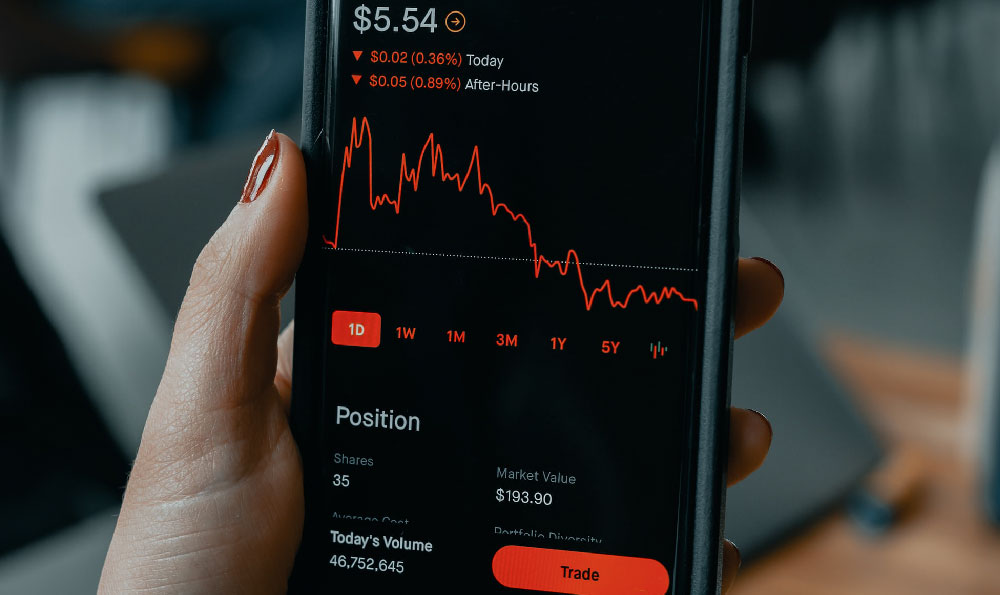
Is the S&P 500 a good investment? That's a question on the minds of many, especially those navigating the often-turbulent waters of the financial markets. Before diving in, let's establish a foundation. The S&P 500, short for the Standard & Poor's 500, is a stock market index that tracks the performance of 500 of the largest publicly traded companies in the United States. It's widely considered a benchmark for the overall health and direction of the U.S. stock market and, by extension, the U.S. economy.
Understanding the S&P 500: More Than Just a Number
The S&P 500 isn't a company you can directly invest in. Instead, you invest in funds that track the index. These funds, primarily Exchange-Traded Funds (ETFs) and mutual funds, aim to mirror the performance of the S&P 500 by holding the same stocks in roughly the same proportions as the index itself. This provides instant diversification, spreading your investment across a broad range of sectors and companies. Think of it as owning a small slice of corporate America.

The Historical Performance: A Compelling Argument
Historically, the S&P 500 has delivered impressive returns. Over the long term, it has averaged annual returns of around 10-12%, although past performance is never a guarantee of future results. This historical performance is a strong argument in favor of investing in the S&P 500, especially for long-term investors. However, it's crucial to remember that the market experiences fluctuations. There will be years of strong growth, followed by periods of correction and even bear markets.
Why Invest in the S&P 500? Weighing the Pros and Cons
Investing in the S&P 500 offers several compelling advantages:
-
Diversification: As mentioned earlier, diversification is a key benefit. Spreading your investment across 500 companies reduces the risk associated with investing in individual stocks. If one company performs poorly, the impact on your overall portfolio is mitigated.
-
Low Cost: S&P 500 index funds typically have very low expense ratios, meaning you pay a minimal amount in fees to maintain your investment. This is a significant advantage over actively managed funds, which often charge higher fees and may not consistently outperform the index.
-
Simplicity: Investing in the S&P 500 is relatively straightforward. You can easily buy and sell shares of an S&P 500 ETF or mutual fund through a brokerage account.
-
Long-Term Growth Potential: As demonstrated by its historical performance, the S&P 500 offers the potential for substantial long-term growth. It's a suitable investment for retirement savings, college funds, or other long-term financial goals.
However, there are also potential downsides to consider:
-
Market Volatility: The stock market is inherently volatile. The S&P 500 can experience significant price swings, particularly during periods of economic uncertainty or geopolitical events.
-
No Guarantee of Returns: Past performance is not indicative of future results. While the S&P 500 has historically delivered strong returns, there's no guarantee that it will continue to do so.
-
Lack of Outperformance Potential: Because S&P 500 funds are designed to track the index, they won't outperform it. If you're seeking higher returns, you might consider investing in individual stocks or actively managed funds (although this comes with higher risk and potentially higher fees).
Assessing Your Risk Tolerance and Investment Goals
Before investing in the S&P 500, it's essential to assess your risk tolerance and investment goals. Are you a conservative investor who prioritizes capital preservation, or are you comfortable taking on more risk in pursuit of higher returns? What is your investment time horizon? Are you saving for retirement in 30 years, or do you need access to your funds in the near future?
If you have a long time horizon and are comfortable with moderate risk, investing in the S&P 500 could be a suitable option. However, if you have a short time horizon or are highly risk-averse, you might consider allocating a smaller portion of your portfolio to the S&P 500 and investing in more conservative assets, such as bonds or cash.
Diversification Beyond the S&P 500
While the S&P 500 provides diversification within the U.S. stock market, it's important to consider diversifying your portfolio further by investing in other asset classes, such as international stocks, bonds, real estate, and commodities. This can help to reduce your overall risk and potentially enhance your returns.
Dollar-Cost Averaging: A Strategy for Mitigating Risk
Dollar-cost averaging is a strategy of investing a fixed amount of money at regular intervals, regardless of the market price. This can help to mitigate the risk of buying high and selling low. By consistently investing over time, you'll buy more shares when prices are low and fewer shares when prices are high, potentially leading to a lower average cost per share.
The Verdict: A Valuable Tool, Not a Magic Bullet
In conclusion, the S&P 500 can be a good investment for many investors, particularly those with a long time horizon and a moderate risk tolerance. It offers diversification, low cost, and the potential for long-term growth. However, it's crucial to understand the risks involved and to assess your individual financial situation before investing. The S&P 500 should be viewed as one component of a well-diversified investment portfolio, not as a magic bullet that guarantees wealth accumulation. Consulting with a qualified financial advisor can provide personalized guidance and help you make informed investment decisions based on your specific needs and goals. Remember, due diligence and understanding are your strongest assets in the world of finance.





